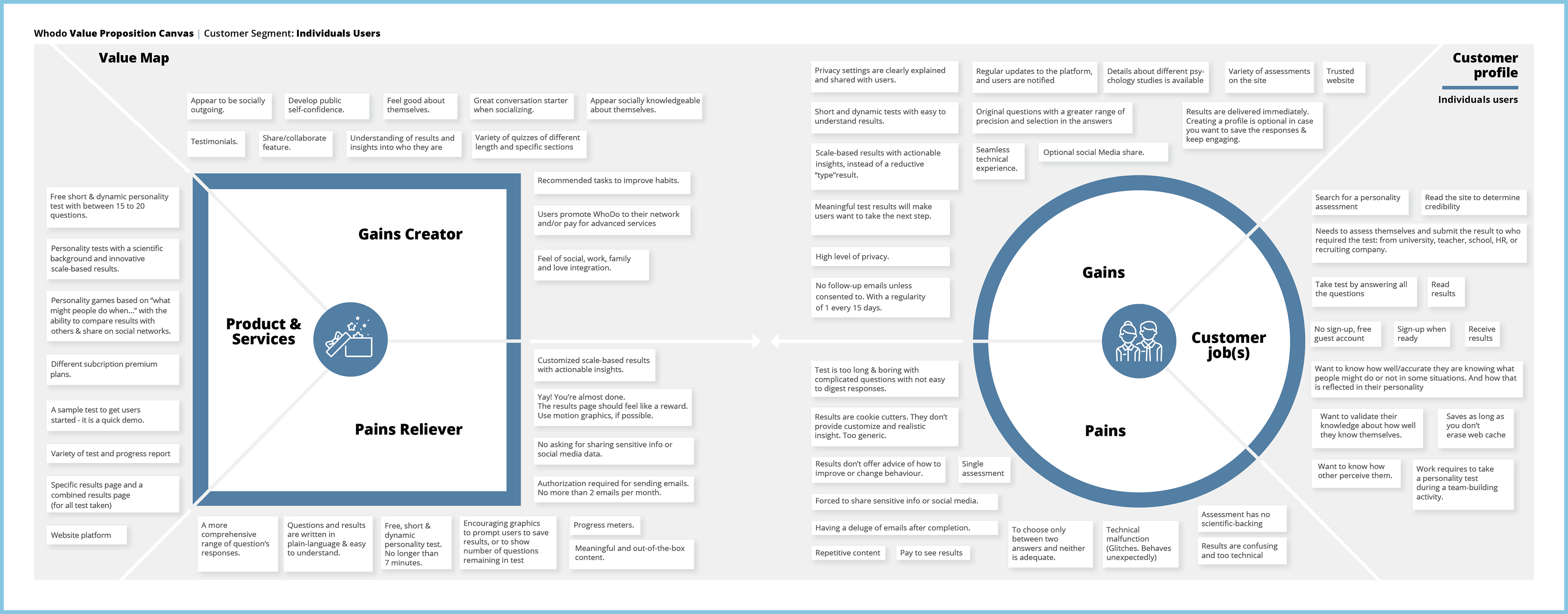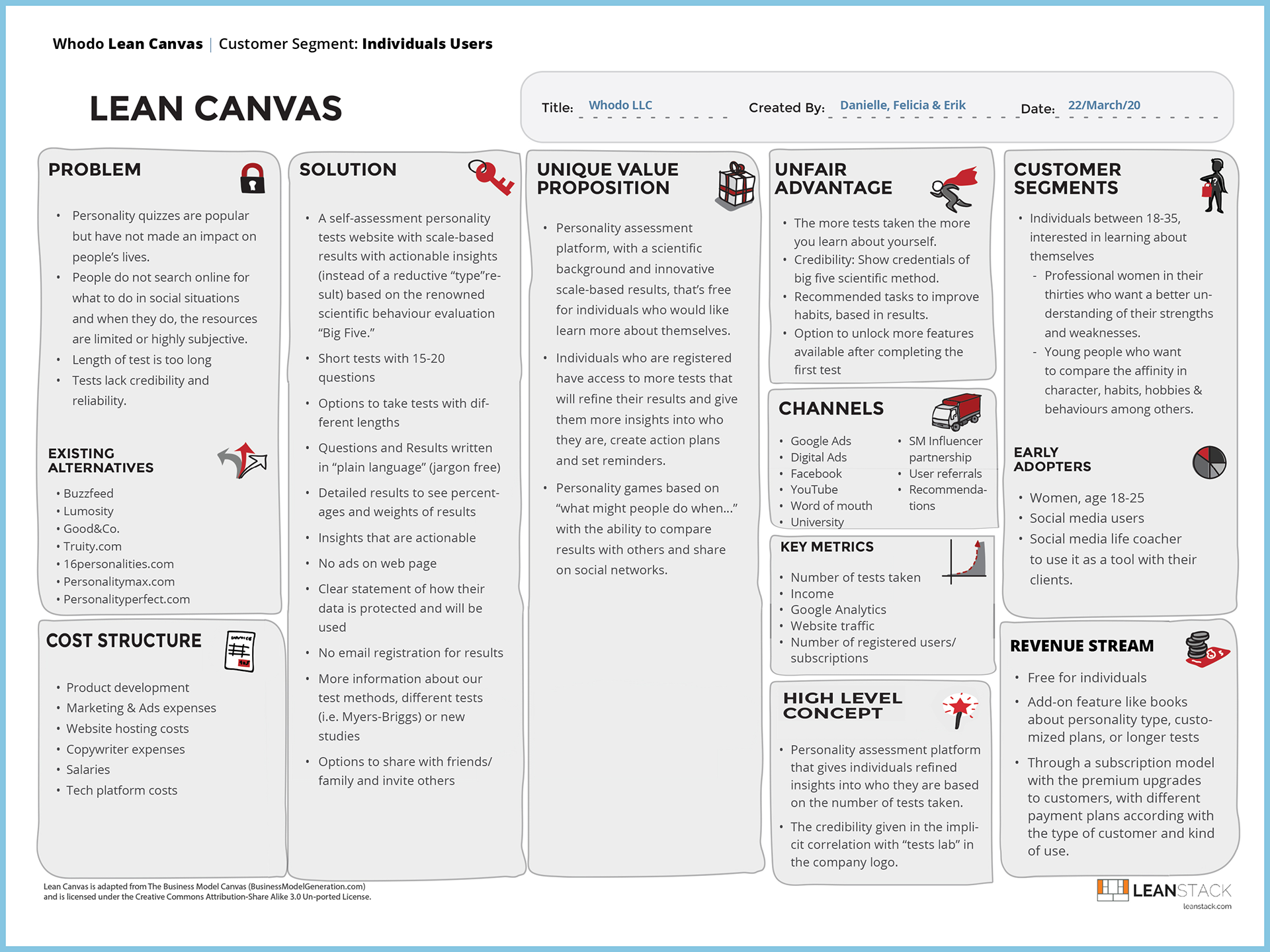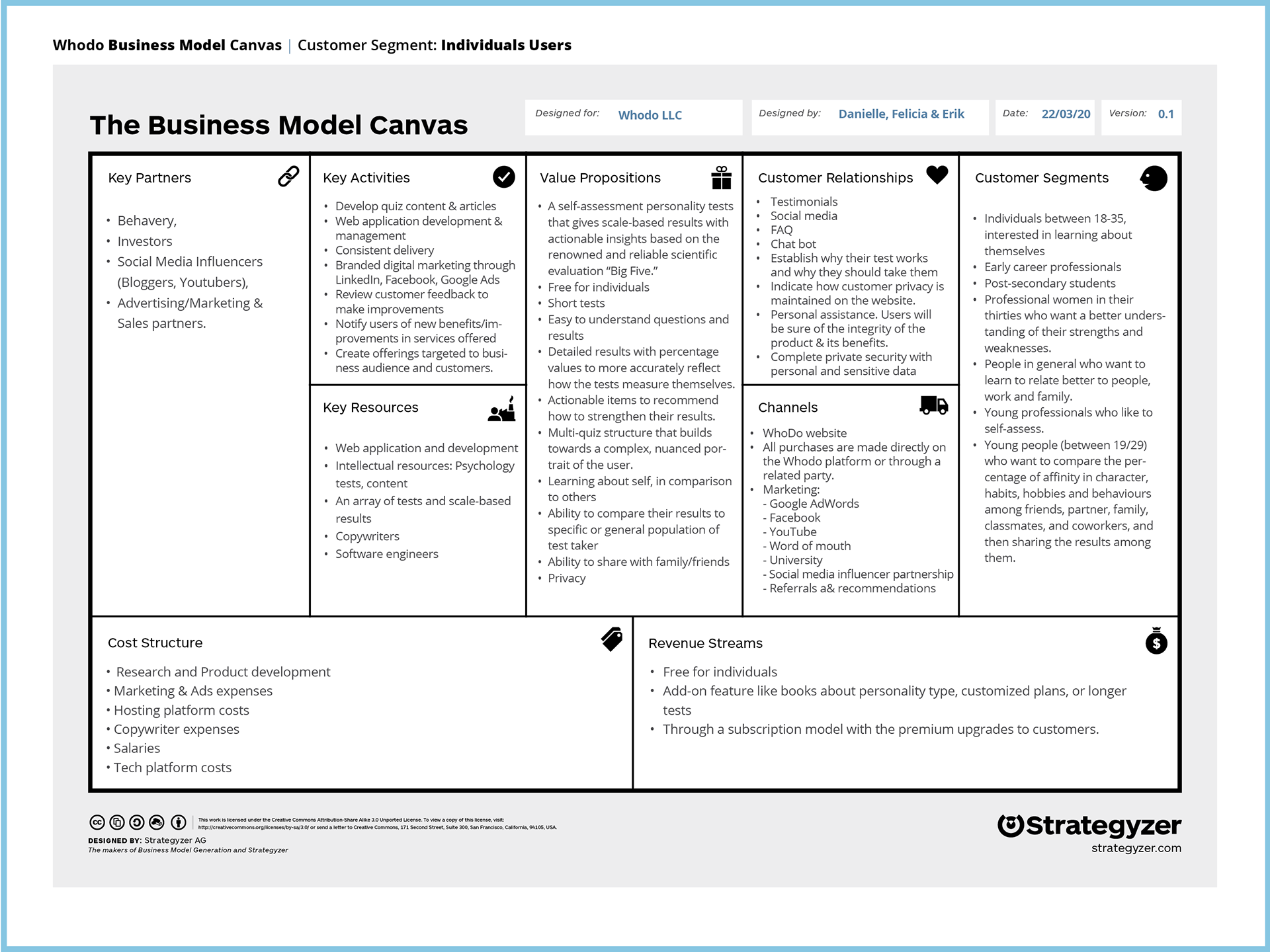WhoDo is the Lab of Personality Tests.
It is a digital platform of science-backed quizzes that reveals the insights based on different contexts. Its combines people’s love for personality and behavioral quizzes with science.
OVERVIEW
WhoDo project is the result of the eight weeks project of the course “Applied UX Design” as part of a UX Design certification at York University. The objective was to work with a real client and/or existing product and to put in practice the theoretical & practical aspects of innovation. How to use the design tools and methods to create a viable product or solution.
My role
Lead UX/UI Designer
RedZone was our team with three members: Felicia Harillal, Erik Char and myself.
Along with my role as lead UX/UI designer, I as well participated in all the aspects and tasks the team carried out to take the project to its end.
I contributed with user research, usability testing and prototype. I made all the UI design: mid-fidelity and high-fidelity wireframes. And did most of the copywriting. I was the bridge between our team and the client/stakeholder managing all communications.
Problem Statement
WhoDo needs to launch his personality test website, but does not know what approach to take with the format of the personality tests to attract first-time visitors and return visitors to the site. Should they be game-based or science-based?
Target Users
1- The core audience is young women between 18 & 39 yrs who are heavy social media users, communicative, and are more likely to be interested in learning about their behaviors.
2- People seeking information about themselves and others. They would like to understand their relationship among personality, behavior and performance.
Exploration Questions
1- How do we attract people to the WhoDo platform to take multiple personality quizzes?
2- How do we entice users to return to the WhoDo platform, to take additional personality quizzes?
3- How can we educate people, so that they know the advantages of taking a personality test and how they can use the insights as tools to help in the different areas of their lives?
RESEARCH & DATA
Primary Research:
- Survey with 100 participants.
- Interview round with 3 candidates.
Secondary Research:
- Literature review.
- Competitive market research.
The research conducted revealed the following data:
Persona, User Journey Map & Business, Lean and Value Proposition Canvas
We created our persona, Jessica, from the interview. Then we proceed to map out a journey of Jessica using WhoDo. After that, we created some business canvas to have a clear understanding of the business aspects of it.



UI & VISUAL
Sketches & Mid-fidelity Wireframes
We sent to our client the sketches to get feedback. Once we received feedback I proceed to create the mid-fidelity wireframes to do a first round of usability test.
Usability Test
We created and launched an usability test with Maze platform. Here is the breakdown:
The test had the following tasks:
1- View all personality tests
2- Take the resilience test
3- Complete the test and view results
4- Send your test results to be reviewed from friends
5- Create an account
High-fidelity Wireframes
After the usability test I created all the high-fidelity wireframes and then build a prototype.
Design System
Along with that a design system was created to gather all the assets.
Prototype
What I learned
After leading the team in charge of creating WhoDo website, I learned that it is advantageous when team members are aligned with the project. The pressure created by lack of time is minimized when all team members are delivered in the same capacity.
It’s rewarding to be able to create different scenarios when creating the user journey map. It gives you a broader insight of the product.
I learned that iterating is a process that does not end, but that transforms as the product moves forward in stages.